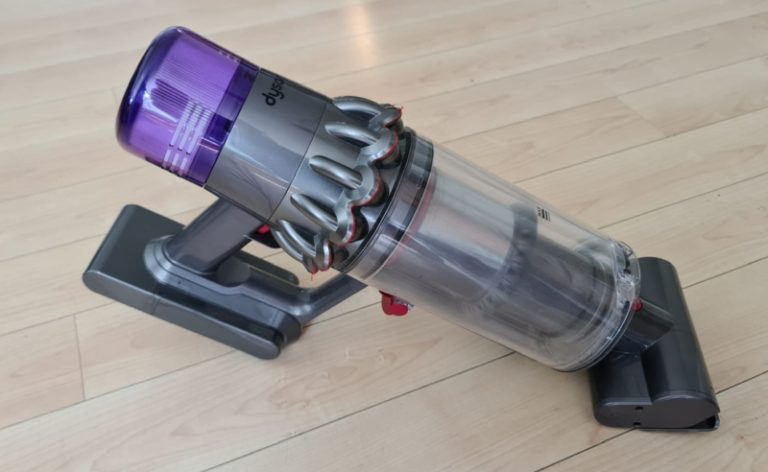Prepare your Bicycle for the winter
Leaving your Bicycle outside during the freezing months is not a good idea. I have seen numerous bicycles getting rotten outside whenever I get a chance to visit a college campus. If you live in a small apartment or condo and have limited storage space, don't worry, there are dozens of pay by the item storage companies in different cities of the USA and Europe.
Whether you will be winterizing your Bicycle or mountain bike in your shed, garage, or basement room or sending it out to a storage company, in both cases, you will have to prepare it for winterization on your own.
Prepare your Bicycle for the winter:
- Step 1: Clean your Bicycle carefully
- Step 2: Empty all the water bottles and rinse them thoroughly
- Step 3: Inspect the brake pads, tires, and wheels of your Bicycle carefully
- Step 4: Oil all the cables carefully
- Step 5: Inspect the entire frame of your Bicycle
- Step 6: Make sure that both the tires are fully inflated
If you want to continue using your bike through the winter, you should
- Step 1: Put on a powerful and reliable headlight
- Step 2: Replace the regular tires with specially designed winter tires
- Step 3: Attach reliable mudguard

To winterize your Bicycle, read and follow the detailed step by step guide given below
Contents
- 1 Prepare your bike or mountain bike for the winter
- 1.1 – Step 1: Clean your Bicycle carefully:
- 1.2 – Step 2: Empty all the water bottles and rinse them thoroughly:
- 1.3 – Step 3: Inspect the brake pads, tires, and wheels of your Bicycle carefully:
- 1.4 – Step 4: Oil all the cables carefully:
- 1.5 – Step 5: Inspect the entire frame of your Bicycle:
- 1.6 – Step 6: Make sure that both the tires are fully inflated:
- 2 Continue riding through the winter:
- 3 Final remarks
Prepare your bike or mountain bike for the winter
– Step 1: Clean your Bicycle carefully:
The roads during the winter season are coated with layers of salt, which causes a lot of corrosion on the frame of your Bicycle. The weather is almost always wet and rainy, so there is a lot of muck, grime, and water on and around the roads. These factors make it necessary for you to clean the frame and the tires of your Bicycle regularly after each ride.
First of all, you must take a good quality soft bristle brush to knock off the lumps of dried mud sticking around the tires, chain, and upper frame of your Bicycle.
One of the easiest and simplest methods to clean your Bicycle is to use a bucket full of water with a piece of plain cloth. You can also use a bicycle-specific detergent that is readily available in stores and online. You must also invest some money in a good quality degreaser to fight off the extra layers of grease.
It is not always advisable to use a pressure washer to clean your Bicycle because it can damage the fragile cables of your Bicycle. But in case if you end up using one, you must make sure not to point the lance directly at any bearing of your Bicycle. You must then sanitize and disinfect the saddle and the rubber handgrips of your Bicycle to kill the bacteria and other harmful organisms.
To maintain the shine, softness, and smoothness of the seat of your Bicycle, you must use a leather cleaner or vinyl cleaner depending on the seat material. If you want that the entire frame of your Bicycle should look like a new one off the shelf when you take it out of storage in the next spring season, you must invest some money in a good quality beautifier plus protectant available from stores and online. The application of such a beautifier plus protectant takes only a couple of minutes, but it renews the appearance of your Bicycle.
After you have carefully wiped the entire frame and the tires of your Bicycle, the next step is to bath your chain (clean your bicycle chain). First of all, you must make sure that you have carefully removed all the accumulated grime, grease, dust, dirt, and muck off the chain of your Bicycle from the previous riding season. Secondly, you have to pay a lot of attention to the lubrication of every link of the chain of your Bicycle.
A fresh layer of a high-quality lubricant will protect the chain of your Bicycle against rust, wear, and tear during storage. This is something that you will be proud of in the next riding season. For this, you must at least invest 10 to 15 minutes out of your busy schedule.
– Step 2: Empty all the water bottles and rinse them thoroughly:
You don't want bacteria and unpleasant smell to cultivate inside your hydration packs and water bottles, so make sure that all of the liquid inside them is drained out. You can use some mild household detergent to rinse them. Air dry them before shutting the caps again.
– Step 3: Inspect the brake pads, tires, and wheels of your Bicycle carefully:
Before winterization, you must carefully inspect the wheels of your Bicycle for any broken, damaged, or loose spokes. You must make sure that the wheels are rotating in a straight path and not rubbing against the brake pads of your Bicycle. If the wheels of your Bicycle are veering from side to side, you must repair them before winterization.
You must make sure that the brake pads of your Bicycle are correctly aligned. Make sure that you are not facing extra wear at the brake pads.
– Step 4: Oil all the cables carefully:
You must pay a lot of attention to the lubrication of two cables of your Bicycle: i) the one that controls the brakes of your Bicycle and ii) the one that controls the shifting of your Bicycle. You don't have to pour the lubricant directly from its container. Instead, you can use a small rag dipped in a high-quality lubricant and smoothly rubbed it on the exposed cables.
– Step 5: Inspect the entire frame of your Bicycle:
The bottom brackets and welded joints of your Bicycle are the two places that are more prone to getting cracked or damaged easily. Before winterizing your Bicycle for the chilly months, you must carefully inspect the entire frame of your Bicycle for any dents and damage. Look at the areas that support your body weight.
If you notice any cracks, you must get it repaired by a professional mechanic before you put it into storage, to prevent it from getting worse over the chilly months.
– Step 6: Make sure that both the tires are fully inflated:
If you are planning to winterize your Bicycle resting on its tires, you must make sure that both of them are fully and tightly inflated. If unluckily, the tires of your Bicycle are left flat, the weight of the frame of the Bicycle will press down hard on one of the sidewalls of the rubber tube, which will, of course, damage it over time. In most cases, this damage is beyond repair, and it will need a lot of investment once you plan to ride your Bicycle again.
Suspending a bicycle to the ceiling is a more space-saving idea, but it is not possible in every kind of room, plus you will have to invest money in ropes, buckles, and the likes.
Continue riding through the winter:
Your Bicycle is not only your companion during the spring and the summer season, but you can also continue riding it throughout the winter months. There are three main changes that you need to do to your Bicycle to make it suitable for winter riding. If you are crazy about cycling don't worry your Bicycle will accompany you throughout the winter season without complaining at all.
– Step 1: Put on a really strong and reliable headlight:
Winter days are really short, dark, and cloudy. It is necessary for your own safety and for the safety of other riders that you have enough light ahead. I would recommend an LED light or the ones that use rechargeable Lithium-ion batteries.
It is advisable to attach two additional headlights at the front and two at the back of your Bicycle for early morning and late evening rides. You should have a back up in case one of the lights fails, or you forget to charge it.
– Step 2: Replace the regular tires with specially designed winter tires:
During the winter season, sharp objects like glass, flints, spikes, thorns, etc. are usually washed onto the roads. Unfortunately, there are great chances of a puncture. Winter tires are puncture-resistant, have higher rolling resistance, and are heavyweight compared to the summer ones.
You can replace your regular tires with a pair of reliable tubeless tires. The absence of the inner tube eliminates the chances of a flat tire in the middle of the road.
– Step 3: Attach reliable mudguards:
Mudguards will protect your clothing and your friends against the splashing water when it is raining outside, or the snow is melting. If your Bicycle is equipped with eyelets, it is straightforward to attach to the mudguards. But bicycles without eyelets need clip-on mudguards.
Mudguards are available in extended and wide shapes. You can choose your favorite colors, shade, and prints or get custom-designed ones. It only depends on the budget that you are willing to invest here.
Final remarks
To sum up this blog post, I would say that, having read the above-given simple steps, I am fully confident that now you can move ahead and start preparing to winterize your Bicycle easily without any further confusion. Ensure that you choose a well ventilated, dry, safe, and straightforward place to winterize your Bicycle for the upcoming freezing months. Make sure that you don't skip the steps of lubrication, repair, and maintenance because your Bicycle will offer you the most pleasant ride the next spring season.






